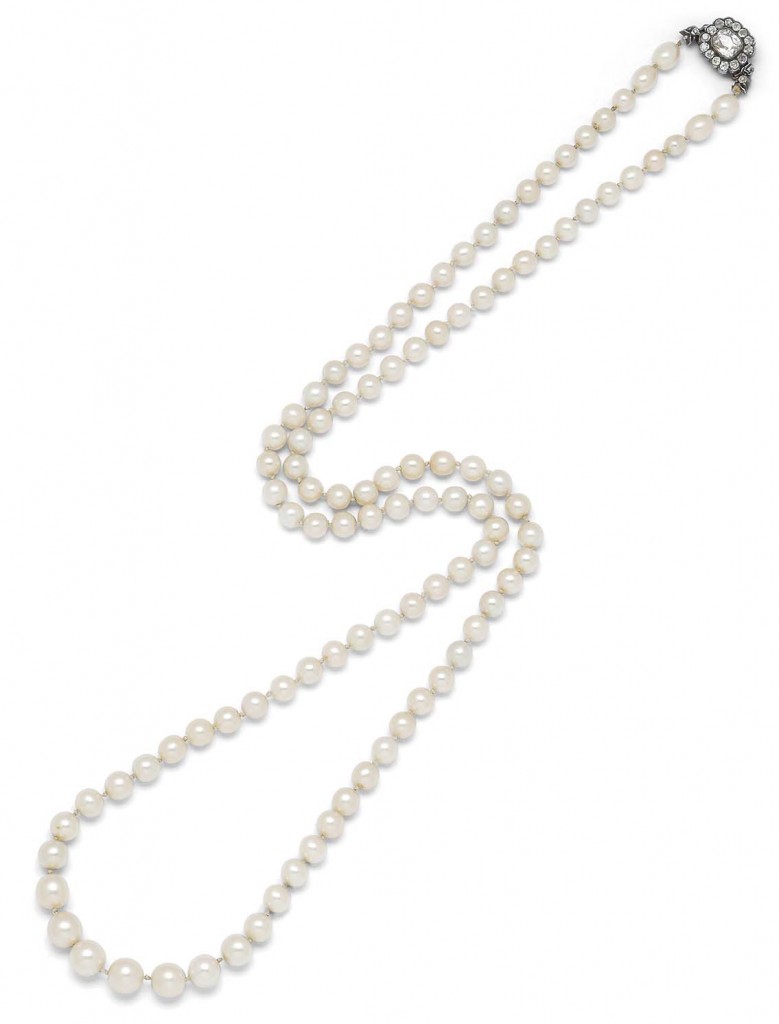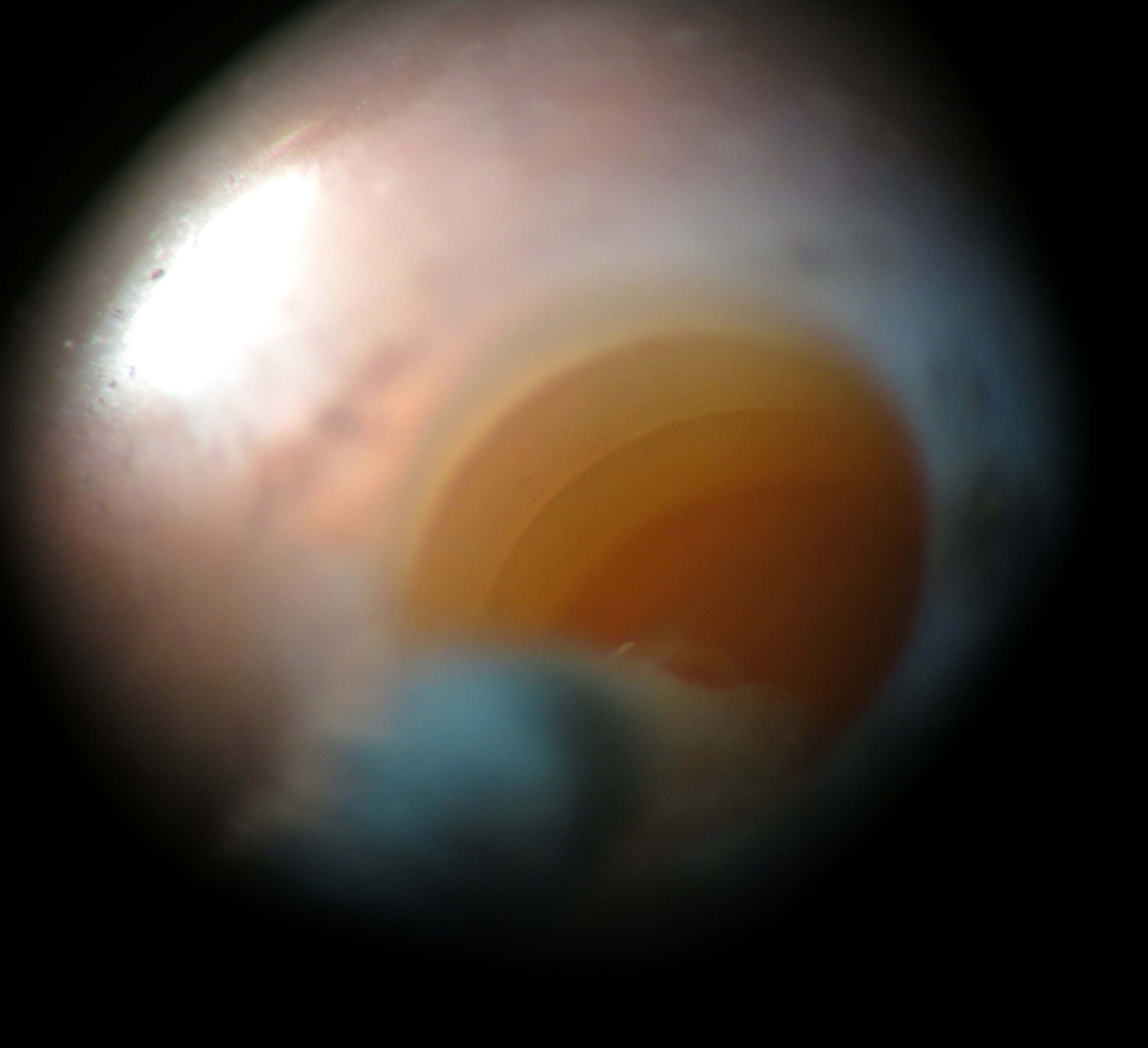
Natural pearl necklace: Lot 261 in Dupuis Spring 2014 Auction, sold for $60,000 http://bit.ly/DUPUIS-LOT-261
Natural pearls are a very rare thing. They have grown by accident, and are the product of incredible good fortune. Once upon a time people would dive, time after time, into the ocean, searching for the one elusive “oyster” that was bearing the extraordinary gift of a pearl. These natural pearls are very rare, and highly desired today.
The translucency of the pearl material called “nacre” gives natural pearls a radiance that is unlike anything else. This translucency allows light to penetrate the natural pearl and produces reflection of light and iridescence, often in a rainbow of colours, sometimes referred to as “orient” or “overtones”.
What gives value to a pearl is its size, the smoothness of its surface, the roundness of its shape, its body colour, the colours of the “overtones” seen in each, and the matching of the pearls if there are more than one.
One of the ways that we distinguish natural pearls from cultured pearls is that cultured pearls usually have a bead of mother of pearl inside, and a layer of the pearl material called nacre laid on by the mollusc, or “oyster” on the outside, and natural pearls are layers of nacre all the way to the centre, with no bead.
We can X-ray pearls to detect a bead, or sometimes we can look down the drill hole to detect a bead. In natural pearls we often see layer after layer all the way to the centre of the pearl. Following are some images of the layered structure seen in some of the natural pearls in the necklace shown above.


